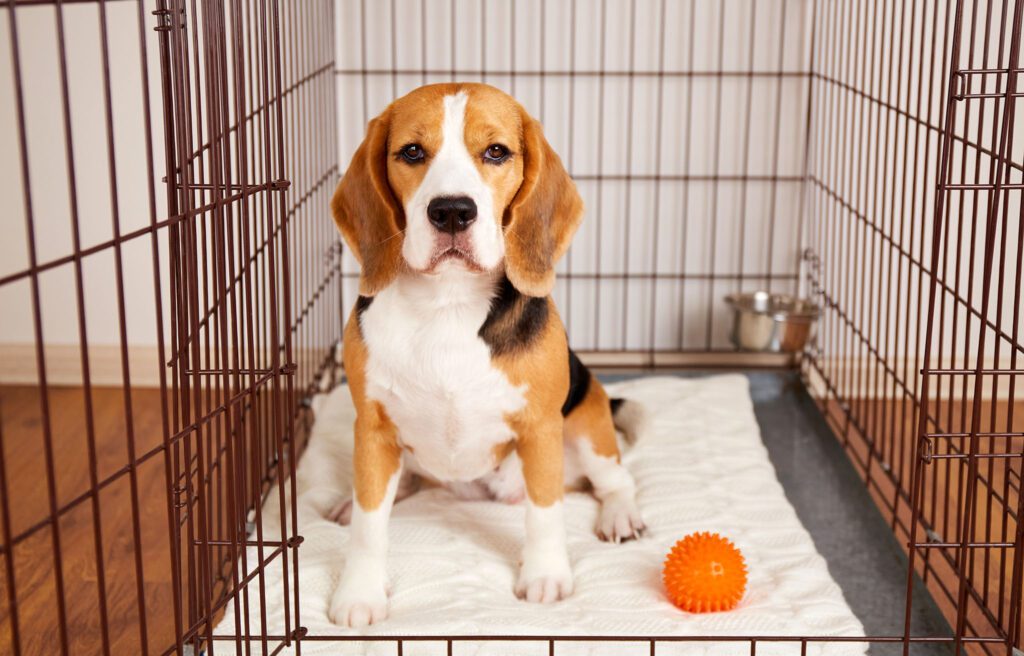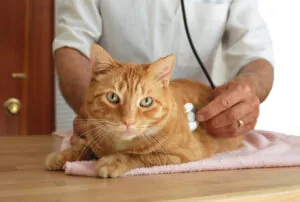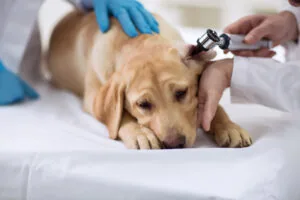Crate Training Your Pet
Crates can be a “safe place” for puppies
Crates are often looked at as “prison cells” because they are made of open wire, fiberglass, or plastic. Despite their appearance, crates can be a home-away-from-home or a comfortable retreat. Crates are great tools with house training. For car travel, inside a crate is probably the safest place for a puppy to ride and for pups to have to fly cargo, crates provide a touch of the familiar while on the plane.
Making pups comfortable with the crate
Don’t isolate your pup while he’s in his crate. Buy two crates- one for the bedroom and one for the living room. Line it with a soft blanket, put in some treats and show the puppy how to get in. Once your pet is accommodated with going in and out of his crate, you can add a cue word such as “kennel” as they move toward the crate and give him a treat as soon as they enter. Repeat this several times at different intervals until they go in when they are told to. At this point, you can shut the door for short periods. Ignore your pet while opening and shutting the door. Once your pet is satisfied, make the length of time he is in the crate longer and at different times of the day, while you are home. The more random and persistent you are, the less likely the dog is to worry that you have left them.
Learning to love the lockup
Don’t call them and then lock them up, instead use a command like “go to your crate” or “kennel”. Lure them in with a little food and hand it over as soon as they enter. The minute they venture out, cut off the praise and the treats. Put a few pieces of kibble in the crate to entice them so they develop a habit of going in by themselves and praise them each time. Do not use the crate as “time out” for misbehaving; using a crate this way will render it aversive and therefore less useful as a behavior management tool.
The crate and house-training
To confine an untrained dog in a crate is asking for a disaster because they will be forced to soil in the crate, and it will no longer be useful to hinder any accidents. Start by teaching them to eliminate in one place outdoors. During the training period, set limits. Don’t allow them to rule the roast. Most puppies can’t control their urine or feces for extended periods and the most important part of house-breaking is setting up and sticking to a schedule. Feed them at a consistent time and watch their natural schedule. Puppies usually need to be eliminated shortly after waking up, eating, and playing. Young puppies may need to urinate every two to four hours.
When your pup eliminates in a designated area, praise them immediately. Do not wait until you are back indoors; you are praising them for coming inside, not eliminating outdoors. If your pup is repeatedly messing in their crate, talk to your veterinarian to rule out intestinal parasites and urinary-tract diseases. If you need to be away from home for a few hours, hire a pet-sitter to take the puppy out or enclose your pup in a larger pen to provide them with an opportunity to eliminate away from their resting spot.
Punishment after the fact doesn’t work, if an accident happens, clean it up with a good enzymatic cleaner and blame yourself. You’re the one who wasn’t supervising the pup at the time of the accident. If you catch them in the act, make a loud noise to distract them and immediately take them outside. Dogs with separation anxiety will often urinate, defecate, or bark when confined. In fact, some dogs become so anxious when confined they destroy their crates and hurt themselves; these dogs do better when confined in a larger area, but if the problem persists, consult your veterinarian. A comfortable crate should be twice the size of your pup.
Share This Post
Recent Posts
About Shallowford Animal Hospital
Shallowford Animal Hospital and The Pet Spa at Shallowford are dedicated to the exceptional, compassionate care your pet deserves. Pets hold a very special place in our families, and we treat yours like our own.




